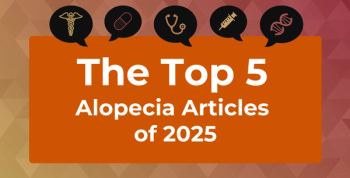
Study Finds Link Between Cerebellum Structure, High-Frequency Migraine
Structural volume and connectivity changes of the cerebellum may impact headache persistence in patients with high-frequency migraine (HFM), according to a study published in The Journal of Headache and Pain.
Structural volume and connectivity changes of the cerebellum may impact headache persistence in patients with high-frequency
Researchers analyzed baseline clinical profiles and brain-MRI data of patients with HFM (10—30 headache days/month) and controls to identify brain signatures predictive of long-term patient outcomes.
Outcomes were determined after 2 years of treatment from headache specialists. Good outcomes were defined as ≥50% reduction of baseline headache days whereas poor outcomes were defined as reduction < 50% or frequency increase.
To study gray matter volume (GMV), researchers used voxel-based morphometry. Structural covariance (SC) was used to determine structural connectivity.
Throughout the study window, “48 patients were treated with both migraine prophylactic (including topiramate, propranolol, metoprolol, flunarizine, valproic acid, tricyclic acid, or amitriptyline) and abortive medications (sumatriptan or non- steroidal anti-inflammatory drugs), while the other 8 patients were treated with abortive medications only,” researchers said.
In total, 37 patients had good outcomes at the 2-year mark and 19 had poor outcomes. Compared with controls, patients with HFM “had decreased GMV over the right supramarginal gyrus and increased GMV over the right cerebellar crus II.” In addition, patients with poor outcomes “had decreased GMV over the left posterior cingulate gyrus and increased GMV over the bilateral cerebellum and the right precentral gyrus,” compared with healthy controls.
Logistic regression analyses showed the GMV of the right cerebellar VIIIa along with the integrity of the SC between the right cerebellar VIIIa and the right cuneus, were both independent predictors of poor patient outcome (P = .006 and P = .005, respectively).
Researchers note studies have shown cerebellar activation during migraine episodes. Ischemic lesions have also been found on the cerebellum in patients with migraine with or without aura.
“Our study in patients with HFM… demonstrated a volume increase of the right cerebellar hemisphere, which correlated with higher disability (the Migraine Disability Assessment Scale [MIDAS] score),” researchers said. They continued, “our 2-year follow-up revealed an unfavorable outcome in those patients with greater cerebellar volume since they were less likely to have long-term headache remission.”
Future studies should be carried out to further investigate the role of the cerebellum in migraine pathogenesis, researchers conclude.
Reference:
Liu H, Lee P, Chou K, et al. The cerebellum is associated with 2-year prognosis in patients with high-frequency migraine [published online March 18, 2020]. J Headache Pain. doi: 10.1186/s10194-020-01096-4.
Newsletter
Stay ahead of policy, cost, and value—subscribe to AJMC for expert insights at the intersection of clinical care and health economics.








































